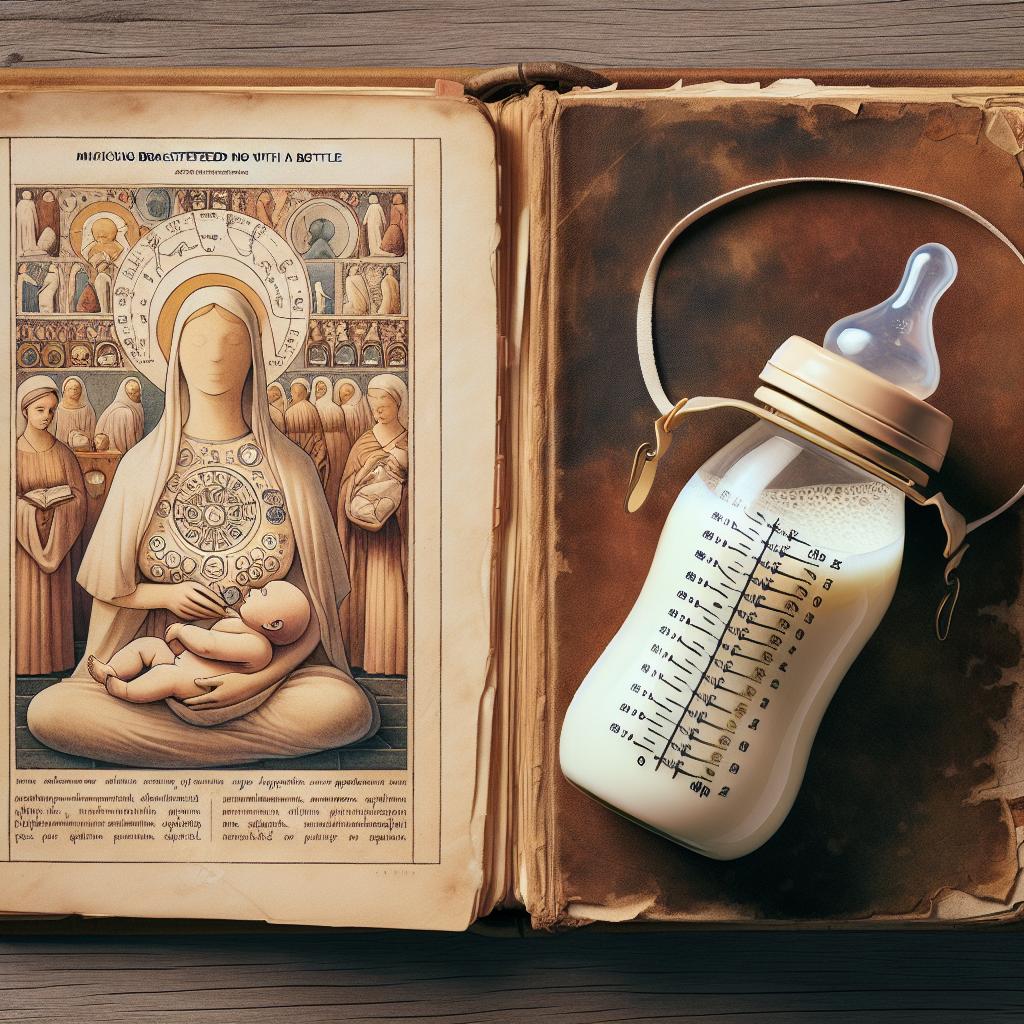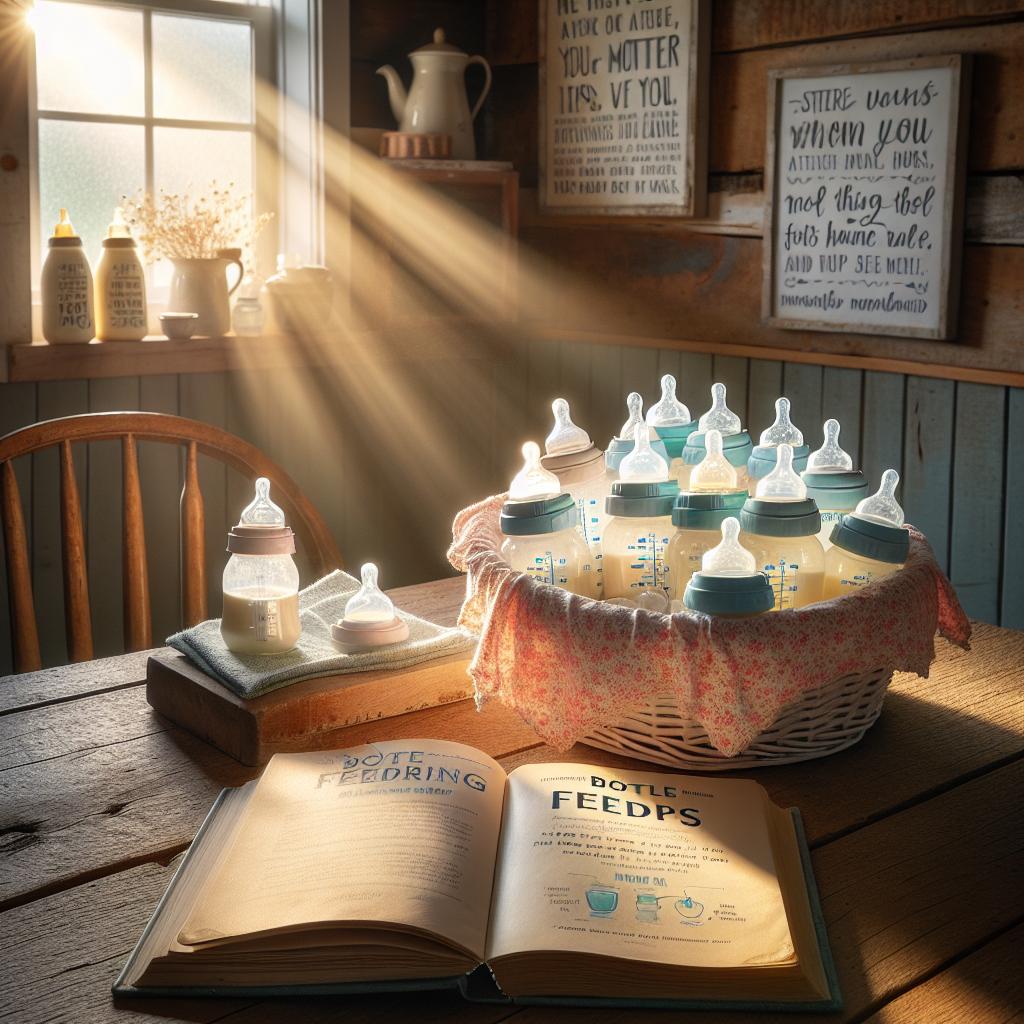Creating a Breastfeeding-like Experience with a Bottle: A Practical Guide
Transitioning from Breastfeeding to Bottle-feeding
It’s no secret that some babies can be hesitant when transitioning from breastfeeding to bottle-feeding. This change can be challenging for both the baby and the parents due to differences in the feeding experience. However, there are ways to mimic breastfeeding with a bottle, creating a more comfortable and natural feeding experience for your baby. This article will guide you on some of the best practices to achieve this.
Steps to Mimic Breastfeeding with a Bottle
Here are some proven steps to effectively mimic breastfeeding with a bottle:
- Choosing the right bottle: Not all baby bottles are created equal. It’s essential to choose a breastfeeding-like bottle that is specifically designed to mimic the natural breastfeeding experience. These bottles typically have a naturally shaped nipple, flexible body and offering a similar flow to that of a mother’s breast. Brands like NUK Simply Natural provide such bottles.
- Adopt paced bottle-feeding: Paced bottle-feeding is a feeding method that allows the baby control the flow of milk, much like how it would if it were breastfeeding. This makes them feel more comfortable and can make the transition much smoother. For more details, check out this in-depth guide on paced bottle-feeding.
- Hold your baby correctly: The baby’s position while feeding can also contribute to their comfort. Try to hold your baby in a semi-upright position, with the bottle held horizontally. This position can mimic the position used when breastfeeding, providing a more familiar experience.
Comforting Your Baby during Bottle-feeding
Comfort is key when feeding your baby, be it through breastfeeding or a bottle. Here are a few ways to ensure your baby feels secure and calm during bottle-feeding:
- Keep a warm touch: Breastfeeding is not just about feeding, it’s also about the warmth and proximity of the mother. Try to maintain as much skin contact as you can while bottle-feeding. Holding your baby close can provide the comfort they’re used to during breastfeeding.
- Stick to the regular feeding schedule: Following a regular feeding schedule similar to breastfeeding can help your baby adapt to the transition. Babies thrive on routine, so ensuring your bottle-feeding schedule matches as closely as possible to your breastfeeding schedule can be beneficial.
- Respond to their cues: Just like breastfeeding, it’s essential to follow your baby’s cues during bottle-feeding. If they seem to need a break, let them pause. If they seem hungry, don’t hesitate to feed them. For more information on comforting your baby during feeding, visit our comforting baby guide.
The Transition Period
It’s important to note that every baby is different, and what works for one might not work for another. Patience and persistence are crucial during this transition phase. It might take a little time for your baby to get used to a new way of feeding. Remember, you’re not alone in this journey. There are plentiful resources and tips available like the ones on The Baby’s Brew Blog to help you along the way.
Benefits of Mimicking Breastfeeding with a Bottle
Duplicating the breastfeeding experience with a bottle comes with various benefits:
- Continuity: This practice provides a sense of familiarity and consistency for your baby, significantly reducing the stress associated with the sudden change from breast to bottle.
- Comfort: By using a bottle with a nipple shape and flow that mimics a mother’s breast, your baby will be more comfortable, increasing their willingness to feed from a bottle.
- Bonding: The close physical contact maintained during this type of feeding further enhances the bonding experience between you and your baby.
- Control: An approach such as paced bottle-feeding grants the baby more control, closely mimicking the breastfeeding experience where the baby controls the feedings.
Keeping the Consistency with Milk Temperature
Just as important as the bottle and technique you choose is the temperature of the milk you’re feeding your baby. Breast milk naturally comes at body temperature, which is ideal for your baby. Hence, when switching to bottle-feeding, it’s important to consistently provide your baby with milk that is roughly the same temperature as breast milk. This familiarity in temperature can make the transition smoother.
A safe and reliable way to achieve this is by using a bottle warmer. Sites like Emulait provide a variety of high-quality, easy-to-use bottle warmers. Maintaining a consistent milk temperature, as with other aspects of bottle-feeding, can help provide your baby a breastfeeding-like experience.
Finding the Right Balance
Transitioning from breastfeeding to bottle-feeding does not have to be a completely binary process. In fact, a mix of both can be the optimal solution for many families, whether due to lifestyle choices, work commitments, or health-related considerations. Combining both feeding methods—also known as mixed feeding—allows for greater flexibility and can make converting to bottle feeding a less intimidating experience.
Remember, a successful transition from breastfeeding to bottle-feeding is not about finding a one-size-fits-all solution. It’s about understanding your baby’s unique needs and finding the best possible way to accommodate those needs.
For further insights on the shift from breast to bottle, make sure to refer to the research article published on SAGE Journals.
Continuous Learning and Support
Learning how to transition your baby from breastfeeding to bottle-feeding can be a daunting task. It’s always beneficial to rely on informative resources and support groups that can offer expert advice and shared experiences.
You can find more tools, techniques, and shared experiences on the Breastfeeding Association’s webpage. Also, to learn about the influence of paced bottle-feeding on development, visit this reference from PMC.
With patience, the right tools, and continued learning, you can make the shift from breastfeeding to bottle-feeding a positive experience for both you and your little one.






